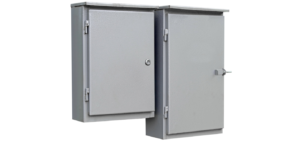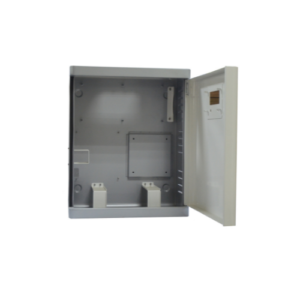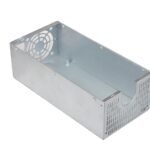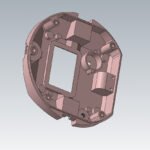Introduction
Water is life. But, it makes life difficult for products that aren’t waterproof. Manufacturers are always in search of waterproof enclosures that render their products waterproof and rugged. What does designing waterproof enclosures involve? In this post, we will dive into the world of product design to learn how to design waterproof enclosures for manufacturing purposes. We will understand the different waterproof grading/rating systems, the required parts, and the material best suited to design waterproof enclosures. So, let’s cut to the chase and jump into the content!
What are the different waterproof grade rating systems?
Ingress Protection (IP)
Ingress Protection or International Protection (IP) is a marking system that evaluates how well a product’s sealing protects it from water and other solid objects. Mostly used to define the waterproofing ability of electronic products, IP rating is mentioned on the device using IPxx inscription. In this, IP stands for Ingress Protection, and ‘xx’ is the two-digit number that defines the waterproofing ability. The first digit in the number shows protection against physical objects, while the second digital shows protection against liquids. The higher the IP rating of a product, the better is its waterproof enclosure.
NEMA rating system
National Electrical Manufacturer Association or NEMA is another popular rating system that is mainly used for industrial products. It is different from IP rating as it focuses on protecting a product from highly intrusive parameters like ice, corrosives, oil, and more. Not just that, it takes into consideration factors like environment (indoor or outdoor), exposure to corrosive agents, and frequency of the product getting in contact with water. NEMA rating is different from indoor and outdoor use. For indoor usage, the industrial product is rated from 1 to 13.
The level of protection improves as the rating increases. Products designed for outdoor use ratings like NEMA 3, 3R, and 3S. NEMA 4 is the rating used exclusively for industrial products used in high-pressure water conditions.
MIL-SPEC rating system
Lastly, we have the MIL-SPEC rating system developed around WWII. The US Department of Defense uses the MIL-SPEC rating system to test a product’s manufacturing, maintenance, materials, and design. It takes factors like humidity, rain, altitude, fungus, temperature, salt fog, dust, san, vibration, transport, leakage, acceleration, and explosive atmosphere into consideration. The best thing about this rating system is that it is always evolving. Hence industries following the MIL-SPEC rating system always end up producing better products.

How to design waterproof enclosure seals?
Gasket sealant
Industrial products involving mechanical joints gain strength when an adhesive glue, paste, or spray is used to join them together. It significantly improves the waterproofing ability of the enclosure and keeps it from any mechanical breakdown when parts come in contact.
A gasket is helpful, especially when making complex face-to-face seals that involve multiple cavities. We highly recommend you consider factors like compressions, tolerances, and thickness of the joints before using a gasket to connect them. Thankfully, you don’t have to worry about standards, as gaskets can be easily customized.
Static O-Ring seals
O-rings are incredibly successful in producing water seal designs and repairing similar products. Although they have one shape, O-rings come in different sizes, which makes them universally accepted. Every O-ring has two numbers denoting the inside- and the outside-diameter.
Static O-rings are perfect for products that are circular in shape. These work best when the mating gland parts do not move relatively. This makes sure that there is no movement in the sealing surface. As a result, status O-rings make low maintenance sealants. These require less lubrication as well.
Dynamic O-Ring seals
Another important O-ring type is the dynamic O-ring. Industrial products with mating gland parts that move make the best use case for dynamic O-rings. Since the parts are moving, dynamic O-ring requires more maintenance and lubrication. Not just that, the sealant should be tougher than static O-rings, and the mating gland parts should have a surface finish. An abrasive surface can lead to wear and tear in the sealant.
Button
Does your industrial product require interfacing? Buttons will give your product the best seal. These are highly useful in sealing directional pads, triggers, panel switches, and other products, as buttons can be made from different materials. Buttons are ideal for both light and heavy-duty designs. Molded rubber buttons can seal products that require a low-pressure waterproof design. Buttons made from harder materials work best for heavy-duty waterproof button design. Many waterproof enclosures use both O-Ring and button seals. However, you should use multiple seals with caution as these are prone to seal failure.
How to choose a suitable material for waterproof enclosures?
Material selection is core to making a solid waterproof enclosure design. Selecting the right material requires one to understand the important factors involved. In this section, we will help you get acquainted with factors that will help you make the right choice.
Figure out the stages of product development
The stages of development your product will undergo matter when choosing a waterproof enclosure material. For instance, product development usually starts with prototyping the actual product. Since it is a prototype development stage, you wouldn’t want to go all the way and use high-quality material. Instead, you will go for low-level material to capture the right fit and function. Once you identify the errors in the prototype, you can go ahead and use original materials to develop the product.
Refer to the use and design guide
The design guide plays a crucial role in determining the type of materials required in manufacturing waterproof enclosures. Manufacturers receive a design guide which is nothing but documentation for how the product is to be made. The guide is quite informative as it helps manufacturers determine the product dimensions, materials required, and the procedure suitable to manufacture the product.
Environment where the product will be used
When choosing the material, we will also have to consider the environment where the industrial product will function. You should know if the waterproof enclosure material suits indoor or outdoor usage. The material selection will play a huge role in determining the durability of the product.

Which material is best to design waterproof enclosures?
So, which material is suitable for designing waterproof enclosures? Plastics and metal alloys are quite popular across waterproof enclosures. Let’s discuss both in detail.
Plastics
Plastics make a perfect choice of material where strength isn’t an issue. It is a versatile choice of material since plastics are easy to mold, corrosion-free, and replaceable. However, superior waterproof enclosure designs usually ditch plastics and go for metal and alloys.
Metals and alloys
If you are looking for a high-quality, robust, and durable waterproof enclosure, you must consider the following metals and alloys –
Steel
Steel is the preferred metal alloy, especially when you need to install a waterproof enclosure in an environment prone to corrosion. Also, steel makes a perfect waterproof enclosure material since it is strong, robust, and is scratch-resistant. However, you will not want to use steel in a product used primarily in corrosion-causing agents or the environment.
Stainless Steel
Stainless steel delivers qualities like steel, but it goes an extra mile to ensure the product functions in a high-corrosion environment. It makes one of the most durable waterproof enclosures that can outlast even the most challenging conditions.
Aluminum
Aluminum is a corrosion-resistant material that provides waterproof enclosure stability in saltwater. It makes an easier choice for manufacturers that are looking for enclosures with better physical attributes. Moreover, aluminum is lightweight. However, we will not recommend you use it in an alkaline environment as it readily reacts in such conditions.

Conclusion
Now that you have a basic idea of what it takes to design a waterproof enclosure, it will be easier to make firm decisions regarding the various factors involved in the process. You are in the best position to determine what you need to design a waterproof enclosure for an industrial product. We highly recommend you plan the interfaces well in advance, so you know the size of O-rings and button styles suitable for your project. Did you find this post helpful? Let us know in the comments. Also, don’t forget to check out other informative posts on the blog!




